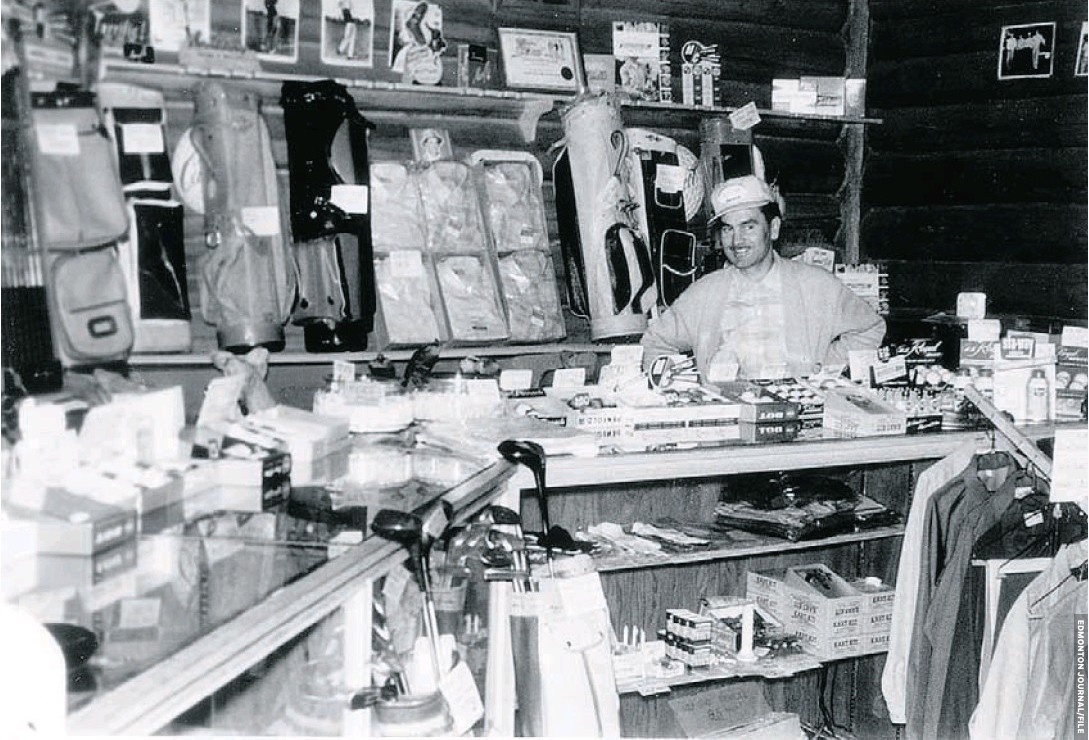Edmonton: Stories from the River City
(A. W. Cashman, Tony Cashman)
Circa 1911, a rifle range marked the site of the present Riverside Golf Course. It was the home of the Edmonton Gun Club where policemen practiced their sharpshooting. During WWII, the American military used it as well.
Dawson Coal Mine
Edmonton.ca and Herzog on Heritage | January 24, 2013 | Article 035

Dawson Park shares a long history of industry and coal mining dating back to the early 1900’s.
The Dawson Mine was situated across the river on the east bank where the current Riverside Golf Course parking lot is. The Dawson Coal Mine, founded by H.J. Dawson just east of the Dawson Bridge, was operating by 1907. The mine was the driving reason for building the Dawson Bridge in 1911. The bridge was built to help facilitate the movement of workers and coal. The Dawson Mine closed in 1944.
Riverside Golf Course
An excerpt from Riverside Golf Course: A Diamond in the Rough – Catherine Bange, August 17, 2011
Regarded as one of the best municipal courses in the world, Riverside Golf Course celebrated 60 years of exceptional golf played alongside river valley creatures and ball-thieving squirrels.
Officially opened in 1951, Riverside was built on the site of the old Dawson Mine which provided Edmonton’s coal for many years.
In fact, many of the numerous dips in Riverside’s fairways are the result of the settling of the mine’s tunnels, giving golfers a slightly new challenge year after year.
Riverside was such a favourite in its’ early years that its original golfers, called the Riverside Rats, lined up at 2 a.m on Thursdays to get tee times for the weekend. The dedicated golfers would pitch tents and camp out in sleeping bags.
April 28, 1962: City police conduct search for missing Riverside golf pro
Via https://www.pressreader.com/canada/edmonton-journal/20140428/281535108993314

Edmonton police were investigating the disappearance of a well-known golfer who had not been seen or heard from for more than a week.
Frank Willey was the first professional at the Riverside Municipal Golf Course where he had worked since the day it opened in 1952. He was also regarded as one of the top putters among Canadian pros, and at one time had ranked high in national competitions.
On this day, Willey’s car was found abandoned in southeast Edmonton with a set of golf clubs inside. Police were told the 48-year old, married father of two was last seen going to deliver golf clubs to a friend.
Willey’s disappearance was front page news for weeks with the growing suspicion that he had been murdered.
On May 4, police arrested and charged Daniel Workman — alias Gene Ray Bain, a 44-year-old bookkeeper — with killing the golf pro.
“It is somewhat unusual to charge a man with murder without a body,” police Chief M.F.E. Anthony said, “but it has been done.”
A second man, 39-year-old William (Headball) Huculak was arrested the next day in Orillia, Ont., on an eastbound CNR train.
The men were charged after an informant told police about two men who had asked him to participate in a killing. The men later told the informant they had disposed of a body in the Looma district, 30 kilometres southeast of Edmonton, after their vehicle became stuck in a muddy field.
During the murder trial police introduced photographs taken in the living room of a partially constructed house on 75th Street near 99th Avenue. The pictures showed a large stain of what appeared to be blood on the floor, partially covered with sawdust. The walls and a floor of a hallway leading from the living room were also covered with the same stains. Blood stains in the basement of the house matched Willey’s blood type. A building contractor reported blood spattered about the house on April 20, the day after the golf pro was last seen leaving his home. Police believed he had been bludgeoned to death at that location.
Although Willey had been living in the same house as his wife, Paris, and their two children, there was strong evidence that Workman and Willey’s wife were having an affair. In February 1961, 14 months before Willey disappeared, Workman asked a lawyer whether it was possible for someone guilty of an affair getting a substantial part of their spouse’s property. When told that wasn’t likely, Workman said to the solicitor, “we’ll just have to kill him.”
The day Willey disappeared he received a telephone call for the delivery of a set of women’s golf clubs, not to exceed $225 in value, as a present for the caller’s wife. He accepted the order and agreed to deliver them at 9 p.m. Earlier, Workman had been at the house where the killing is alleged to have taken place and spoke to the painters, asking them how late they would be working. The builder employed Workman as a bookkeeper.
The evidence was all circumstantial, but the trial ended with the conviction of the two men. They were sentenced to hang, but their sentences were commuted to life in prison.
The whereabouts of Willey’s body remains a mystery. It was first believed to be in a shallow grave in the Loomis district. The search later shifted to Leduc and the Rolly View area. But the golf pro’s body was never found.
